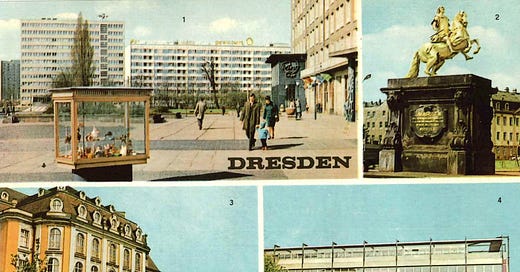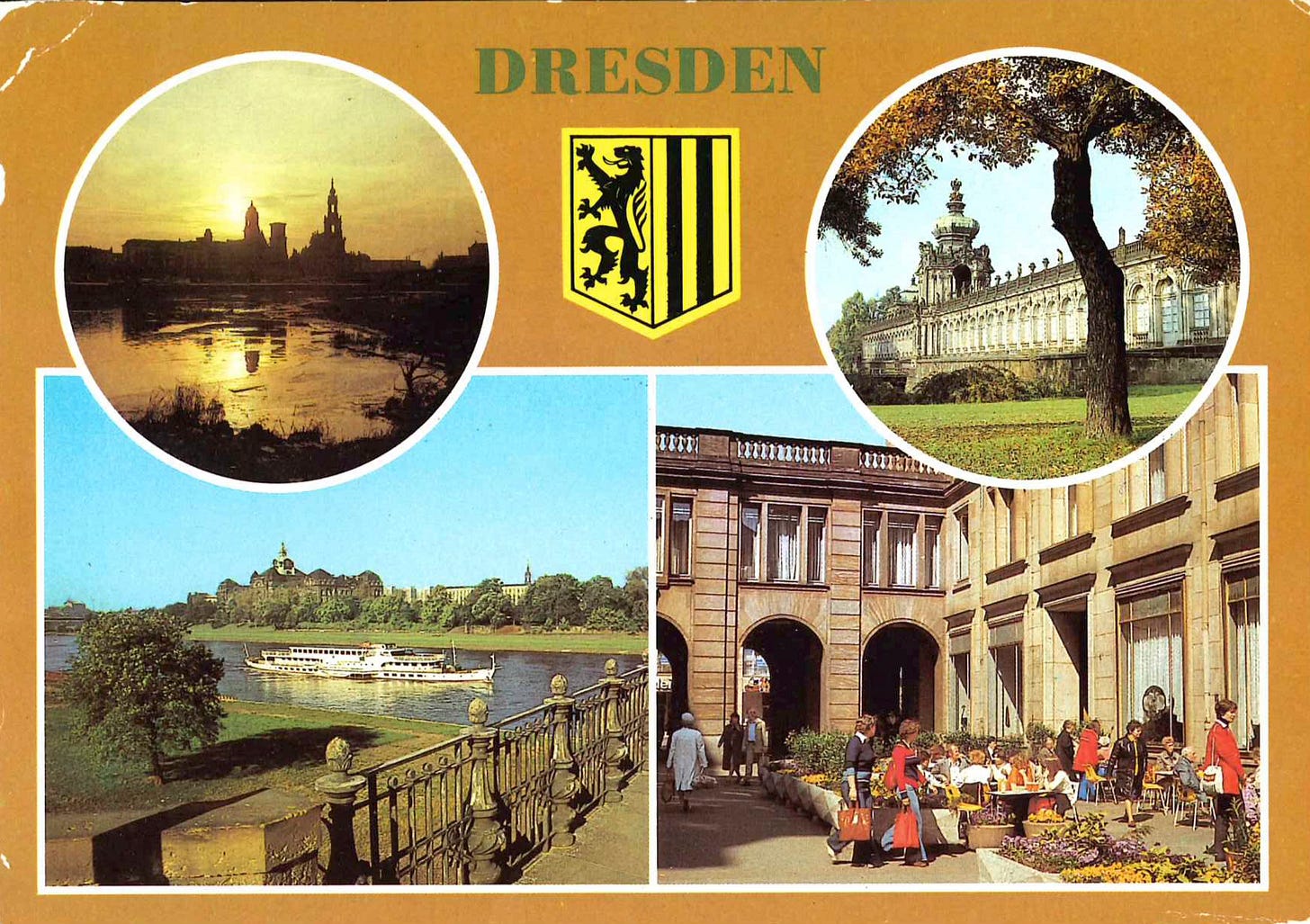Dresden After the Second World War
The "Florence on the Elbe" has been rebuilt after 1945, albeit in a quite…different style
It took me a bit longer than promised, mainly because we enjoyed a few more late (Indian) summer days here; I spent most of my time outside working, also with the animals (horses), and doing a BBQ today.
And then I was reading Erich Sonntag’s wartime poems, published in a rather obscure anthology in 1968. I also obtained a few written accounts of 1944 on the Eastern Front, which is my work-around for the period without his diary notes.
I shall post “more” about my summer reading before too long, but now that autumn is almost upon us, we shall revisit Dresden after the Second World War. From Wikipedia (references omitted):
The controversial American and British bombing of Dresden towards the end of World War II killed approximately 25,000 people, most of whom were civilians, and destroyed the entire city centre. After the war, restoration work has helped to reconstruct parts of the historic inner city.
Since German reunification in 1990, Dresden has once again become a cultural, educational and political centre of Germany. The Dresden University of Technology is one of the 10 largest universities in Germany and part of the German Universities Excellence Initiative. The economy of Dresden and its agglomeration is one of the most dynamic in Germany and ranks first in Saxony…
Dresden is one of the most visited cities in Germany with 4.7 million overnight stays per year. Its most prominent building is the Frauenkirche located at the Neumarkt. Built in the 18th century, the church was destroyed during World War II. The remaining ruins were left for 50 years as a war memorial, before being rebuilt between 1994 and 2005. Other famous landmarks include the Zwinger, the Semperoper and Dresden Castle. Furthermore, the city is home to the renowned Dresden State Art Collections, originating from the collections of the Saxon electors in the 16th century. Dresden's Striezelmarkt is one of the largest Christmas markets in Germany and is considered the first genuine Christmas market in the world.
I elected to keep the links to other Wikipedia entries here so you may click on them, if you so desire. And now—for the customary link to part one:
And, finally, more picture postcards from post-1945 Dresden, East Germany.
Multi-Picture Postcards from Dresden
Old and new—well, socialist realism, I suppose—in Dresden. Above, in this never-mailed postcard, you can see: Am Ring (top left); equestrian statue of August the Strong (top right); the City Museum (bottom left); and the department store HOG “am Zwinger”.
This postcard, mailed in 1984, shows a view of the Brühl’sche Terrasse (top left); the renowned Zwinger (top right); and the Weiße Gasse (bottom right). Below, another picture postcard showing the Zwinger (no date given).
Below, more images of “post-modern” Dresden, also mailed in 1984, showing the “Restaurant International” (top left); the Dr. Rudolf-Friedrichs-Brücke (top centre); the Terrace Banks (top right); the “Interhotel New” (bottom left); the “Icecafé Kristall” (bottom centre); and the Neustädter Market (bottom right), which is found on the eastern banks of the Elbe (the old city is on the western bank).
I do have many more, but I’m quite short on time right now; I’ll therefore post “more” tomorrow. Stay tuned.









Looking forward to the wartime poetry!